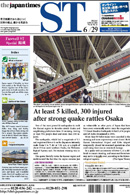Essay
Red Dot for Pink Dot
On July 1, just after the sun had set, a little park in Singapore lit up with a sea of pink lights and tiny rainbows.
It was the ninth edition of Singapore's annual lesbian, gay, bisexual and transgender rally, known as Pink Dot.
Pink Dot started in 2009 as a volunteer movement in support of Singapore's LGBT community. To show support for diversity and the freedom to love, attendees turn up in pink at Hong Lim Park's Speakers' Corner. Speakers' Corner is the official designated space for Singaporeans and permanent residents to demonstrate, hold exhibitions and performances, and give speeches after prior registration on a government website.
Singapore is not known for activism, but Pink Dot has been growing from strength to strength. In 2009, an estimated 2,500 people showed up. This year, there were at least 20,000.
As Pink Dot garnered more attention and support, it faced more challenges. This year was particularly tough. For the first time ever, foreign companies were not permitted to sponsor Speakers' Corner events. Previous editions of Pink Dot had relied heavily on foreign sponsorship, from companies such as Google, Twitter, Facebook, Barclays and Goldman Sachs.
So the organisers started a fundraising campaign called "Red Dot for Pink Dot." Singaporeans refer to our country as a red dot because of how small the island looks on a world map.
The fundraising was a great success. It attracted 120 local sponsors. Last year, only five of 18 sponsors were local.
But Singapore is still a very conservative country when it comes to LGBT rights, and it was even harder for Pink Dot this year because of the prohibition against foreign participation at Speakers' Corner events. Barricades and security checkpoints were set up, and participants had to show their identity cards to prove that they were Singaporean or a permanent resident before they could enter.
Some wondered if the barricades and identity checks would deter people from showing up. The exact opposite happened. Some Singaporeans flew back specially from overseas to participate. Many came for their first Pink Dot precisely because they wanted to show support in the face of the new restrictions. I was one of them. I'd never attended Pink Dot because I have a phobia of crowds. But this year, I was determined to be there.
Local playwright Tan Tarn How said it best. He wrote on his blog: "Sometimes clicking 'Like' on Facebook is not enough. Sometimes you have to show face, because by doing so you show a digit at hate and repression. Sometimes you have to do what is not all that fun."
I agree. And I'm glad so many other Singaporeans agree too. It may take awhile, but may the large pink dot on our little red dot keep on growing.
シンガポールのピンクドット
シンガポールでLGBTの支援イベント「ピンクドット」が開催された。今年は保守的な政府がイベントへの規制を強化したため開催までの道のりは険しかったが、当日は大勢の支援者が会場に集まった。
The Japan Times ST: August 4, 2017
The Japan Times ST 読者アンケート
この記事のご感想をお聞かせください。





